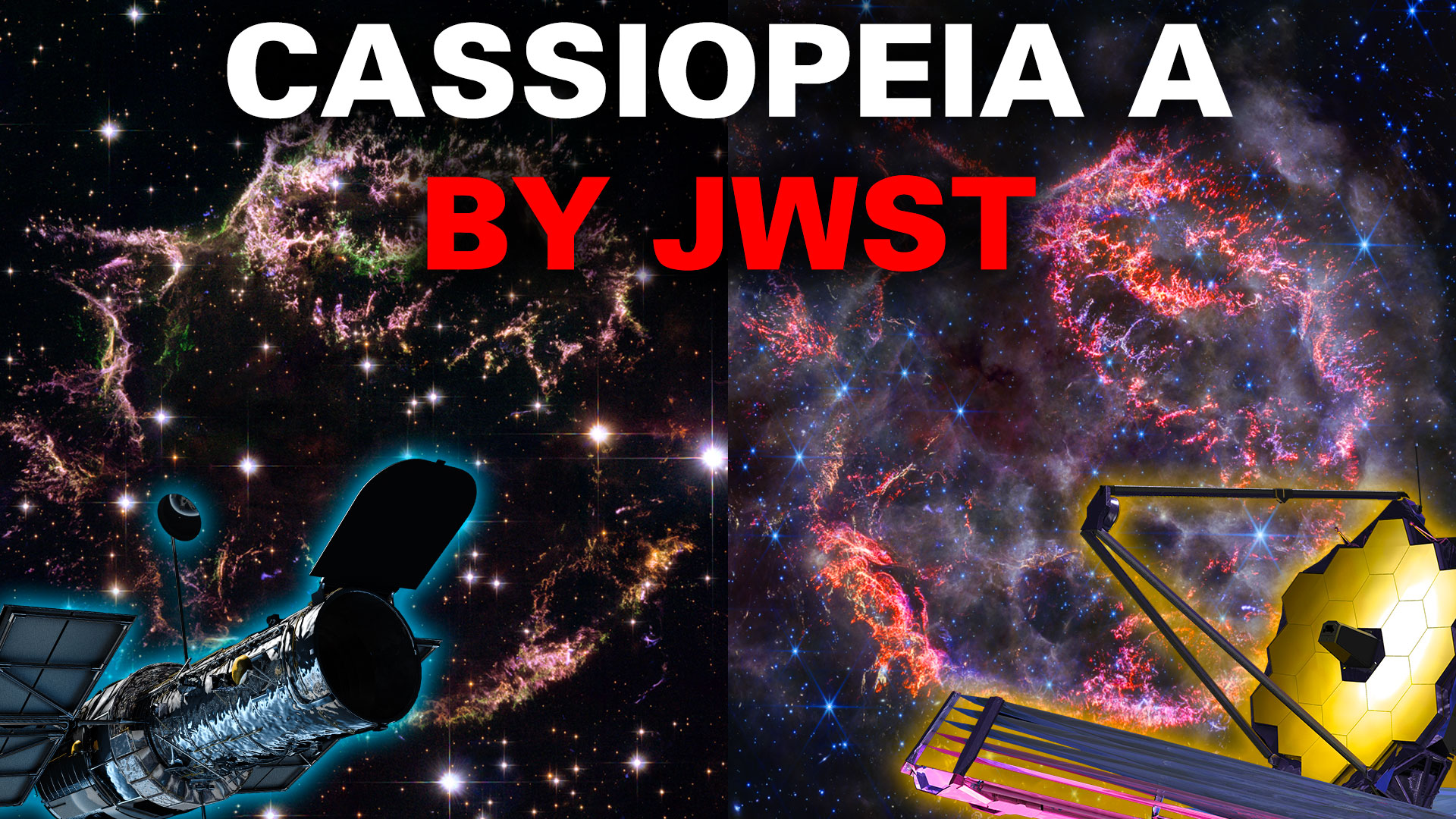Astronomy is all about light. Sensing the tiniest amounts of it, filtering it, splitting it into its component wavelengths, and making sense of it, especially from objects a great distance away. The James Webb Space Telescope is especially adept at this, as this new image of supernova remnant (SNR) Cassiopeia A exemplifies so well.
Before a massive star explodes as a supernova, it convulses and sends its outer layers into space, signalling the explosive energy about to follow. When the star does explode, it sends a shockwave out into its own ejected outer layer, lighting it up as different chemical elements shine with different energies and colours. Intermingled with this is any pre-existing matter near the supernova. The result is a massive expanding shell with filaments and knots of ionized gas, populated by even smaller bubbles.
“With NIRCam’s resolution, we can now see how the dying star absolutely shattered when it exploded, leaving filaments akin to tiny shards of glass behind.”
Danny Milisavljevic, Purdue University
Cassiopeia A exploded about 10,000 years ago, and the light may have reached Earth around 1667. But there’s much uncertainty, and it’s possible that English astronomer John Flamsteed observed it in 1680. It’s also a possibility that it was first observed in 1630. That’s for historians to determine.
But whenever the exact date is, the light has reached us and continues to reach us, making Cassiopeia A an object of astronomical fascination. It’s one of the most-studied SNRs, and astronomers have observed it in multiple wavelengths with different telescopes.
The SNR is about 10 light-years across and is expanding between 4,000 and 6,000 km/second. Some outlying knots are moving much more quickly, with velocities from 5,500?14,500 km/s. The expanding shell is also extremely hot, at about 30 million degrees Kelvin (30 million C/54 million F.)

But none of our prior images are nearly as breathtaking as these JWST images. These images are far more than just pretty pictures. The cursive swirls and knotted clumps of gas reveal some of nature’s detailed interactions between light and matter.
The JWST sees in infrared, so its images need to be translated for our eyes. The wavelengths the telescope can see are translated into different visible colours. Clumps of bright orange and light pink are most noticeable in these images, and they signify the presence of sulphur, oxygen, argon, and neon. These elements came from the star itself, and gas and dust from the region around the star are intermingled with it.
The image below highlights some parts of the Cassiopeia A SNR.

The JWST’s MIRI image shows different details. The outskirts of the main shell aren’t orange and pink. Instead, it looks more like smoke lit up by campfire flames.

The Hubble Space Telescope, the Spitzer Space Telescope, and the Chandra X-Ray Observatory have all studied Cas A. In fact, Spitzer’s first light image back in 1999 was of Cas A.

The Hubble has imaged Cas A too. This image is from 2006 and is a composite of 18 separate images. While interesting and stunning at the time, the JWST’s image surpasses it in both visual and scientific detail.

The JWST’s incredible images are giving us a more detailed look at Cas A than ever. Danny Milisavljevic leads the Time Domain Astronomy research team at Purdue University and has studied SNRs extensively, including Cas A. He emphasizes how important the JWST is in his work.
“With NIRCam’s resolution, we can now see how the dying star absolutely shattered when it exploded, leaving filaments akin to tiny shards of glass behind,” said Milisavljevic. “It’s really unbelievable after all these years studying Cas A to now resolve those details, which are providing us with transformational insight into how this star exploded.”

